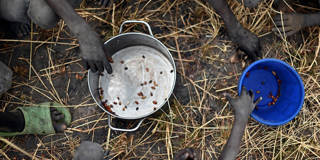For the last several years, world leaders have made big promises and laid out bold plans to mitigate the climate crisis and help the neediest countries adapt. At this year's World Bank/IMF Spring Meetings, they must demonstrate that they can fulfill these promises, rather than simply touting new ones.
CAMBRIDGE/DELHI – The world is facing the worst five-year span in three decades. Higher interest rates have left developing countries crushed by debt, and half of the poorest economies haven’t recovered to where they were before the pandemic. Growth is weak across large swaths of the world, and inflation remains persistently high. And behind it all, the thermometer keeps inching up. Last year was the warmest on record, as is true of nearly every month.

CAMBRIDGE/DELHI – The world is facing the worst five-year span in three decades. Higher interest rates have left developing countries crushed by debt, and half of the poorest economies haven’t recovered to where they were before the pandemic. Growth is weak across large swaths of the world, and inflation remains persistently high. And behind it all, the thermometer keeps inching up. Last year was the warmest on record, as is true of nearly every month.